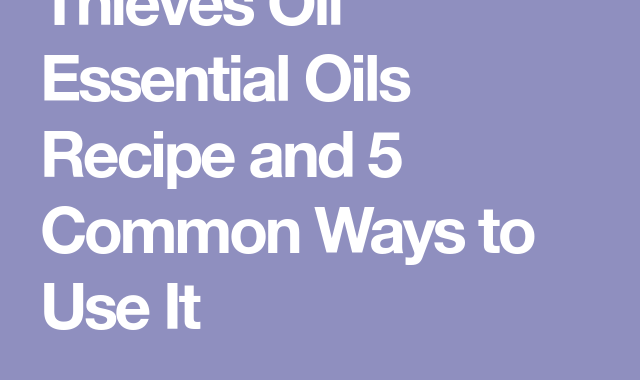Soybean benefits
6 min read
Summary
Soybeans are members of the pea (legume) family of vegetables. Eating soybean-based foods may reduce the risk of a range of health problems, including coronary heart disease. More research is needed, but the evidence so far suggests that it is wise to include whole soy (or soya) foods in your daily diet.
Soybeans contain hormone-like substances called phytoestrogens that mimic the action of the hormone oestrogen. The health benefits of soy for menopausal women could include fewer hot flushes, protection from coronary heart disease (CHD) and lowered risk of osteoporosis.
Whole soy foods have been shown to have health benefits, but the benefits of taking phytoestrogen supplements are unproven. See your doctor or dietitian for further guidance.
Nutrition profile of soy
Soy is a high-quality protein. It is one of only two known plant foods (the other is amaranth seed) to contain all the essential amino acids, similar to those found in meat.
Some soy products are sources of calcium and iron, such as Chinese tofu or tempeh (made with a calcium coagulant) and calcium-fortified soy drinks. The soybean is:
- high in fibre
- high in protein
- low in saturated fat
- cholesterol free
- lactose free
- a good source of omega-3 fatty acids
- a source of antioxidants
- high in phytoestrogens.
Soybeans and phytoestrogens
Soybeans contain hormone-like substances called phytoestrogens (‘phyto’ means plant), which are naturally occurring chemicals found in plants. Given the right conditions, these compounds copy the action of the female hormone oestrogen, but are much less powerful – about 1,000 times less.
There are many types of phytoestrogens, one example being isoflavones. Soybeans are the most common source of isoflavones in food with rich sources found in soy nuts and tempeh. Isoflavones are very strong antioxidants and can mimic the effects of oestrogen, but their full physiological effects are unknown.
Health benefits of soy foods
Research suggests that soy foods and food containing soy have a range of health benefits.
Soybeans and menopausal hot flushes
Due to their phytoestrogen content, it has been thought that soy can reduce menopausal symptoms, such as hot flushes. This is due to the observation that Asian women tend to have soy-rich diets and typically have fewer hot flushes during menopause than their Western counterparts (who tend to have meat-rich diets). However, recent studies have found little effect on a soy-rich diet or supplementation.
It is thought that a soy-rich diet helps reduce menopausal symptoms such as hot flushes, because the phytoestrogens act like a mild form of hormone replacement therapy (HRT). Measured reductions in the rate of hot flushes associated with soy consumption vary from 1.9 per cent to 45 per cent.
More research is needed, but soybeans seem to offer promise in helping some women to manage menopausal hot flushes. If phytoestrogens do work, studies suggest that you need at least two to three serves of soy products daily. This would mean either:
- 500 ml of soy milk per day
- 100 g of tofu per day
- Four to five slices of soy linseed bread per day (depending on the brand).
Soybeans and coronary heart disease
Oestrogen may protect women against coronary heart disease (CHD) during their reproductive years, but rates of CHD increase remarkably after menopause. Soybeans have been shown to lower total cholesterol and LDL cholesterol levels, both known risk factors for CHD.
A meta-analysis (an analysis of multiple studies on a topic) of 41 clinical trials found that 20 g to 61 g of soy protein can significantly reduce total blood cholesterol levels, LDL (bad) cholesterol levels and triglycerides. The results also showed that soy protein supplementation slightly increased HDL (good) cholesterol levels. This amount of soy protein is found in two to three serves of soy products.
It is not known whether the phytoestrogens or the soy proteins (or both, working in combination) or the other characteristics of soy (including high-fibre content and low saturated-fat content) are responsible for these health benefits. However, studies have shown that eating soy protein without isoflavones results in only small cholesterol reductions and isoflavone supplements alone have minimal cholesterol lowering effects.
The cholesterol-lowering benefits of eating soy foods may be improved if the total diet is high in carbohydrate. This seems to help with the breakdown of the isoflavones.
In 1999, the United States Food and Drug Administration acknowledged the heart health benefits of including at least 25 g soy protein daily in a diet low in saturated fat and cholesterol. This equates to approximately four servings of soy daily.
Other health benefits of soy
The soybean needs further research before its health benefits are conclusively known.
Possible health benefits of whole soy foods not already mentioned include:
- lowered blood pressure
- improvements to blood vessels, such as greater elasticity of artery walls
- reduced risk of osteoporosis
- protection against various cancers, including those of the breast, colon, prostate and skin
- management of endometriosis
- anti-inflammatory effects.
Amount of soy for health benefits
Generally, it is thought that 30 to 50 mg of isoflavones is enough to offer health benefits.
Examples of the average isoflavone content of some foods include:
- half a cup of soybeans – 40 to 75 mg isoflavones
- quarter cup of soy flour – 45 to 69 mg isoflavones
- one 250 ml glass of soy drink – 15 to 60 mg isoflavones
- one 115 g block of tofu – 13 to 43 mg isoflavones
- one 110 g block of tempeh – 41 mg isoflavones
- one container of soy yoghurt – 26 mg isoflavones
- two slices of soy bread – 7 to 15 mg isoflavones
- teaspoon of soy sauce – 0.4 to 2.2 mg isoflavones.
Be aware that fermented soy products like soy sauce are high in salt.
Tips for increasing soy intake
If you want to increase your intake of soy:
- Choose whole soy foods like soy milk, soy yoghurt, soy bread and tofu.
- Check ingredient lists to make sure that the soy foods you buy are made from whole soybeans and not soy isolates.
- Make sure that products such as cereals contain soy protein and not just added isoflavone.
Other foods containing phytoestrogens
Foods other than soy that contain phytoestrogens include:
- wholegrain cereals – like oats, wheat, corn, barley, rye and buckwheat
- seeds – for example, linseed, flaxseed, sunflower, pumpkin, sesame and tahini (sesame paste)
- nuts – for example, almonds
- sprouts – alfalfa
- oils – extra virgin olive oil
- other legumes – chickpeas, lentils and kidney beans.
Genetically modified soy products
Some people do not wish to eat genetically modified (GM) foods. Soy products imported from the United States are the main source of GM ingredients in food sold in Australia. Some soybean crops have been genetically modified to be resistant to herbicide, but they are otherwise identical to non-GM soybeans.
Genetically modified soy is found in primary soy products, such as tofu or soy flour, but it can also be found in a wide range of other foods such as chocolates, potato chips, margarine, mayonnaise, biscuits and bread. It is mandatory in Australia for foods to be labelled as ‘genetically modified’ if they consist of more than one per cent (by weight) of an approved GM ingredient.
Soy allergy
Soy allergy can occur in some people due to a reaction to soy protein causing the immune system react abnormally. Soy allergies are common among babies and children. Symptoms include:
- itching
- tingling sensation of the mouth and lips
- flushed skin
- nausea
- diarrhoea
- hives.
Soybeans are widely used in many food products. The food additive lecithin (food additive 322 in Australia) is made from soybeans and is often used on production of chocolate, baked goods, margarine, cheese and other dairy products as well as sauces. Its use in so many products can make it hard substance to avoid, however, not all soy products will cause a reaction. It seems fermented soy foods are less allergenic than raw soybeans.
Foods to avoid if you have a soy allergy include:
- soy milk
- soybean
- soya
- soy nuts and soy sprouts
- soy sauce
- tofu
- miso
- tempeh
- tamari
Where to get help
- Your doctor
- Dietitians Association of Australia Tel. 1800 812 942
- Food Standards Australia New Zealand Tel. (02) 6271 2222
Things to remember
- The soybean may be a ‘superfood’ that can reduce the risk of a range of health problems, including coronary heart disease.
- Soybeans contain hormone-like substances called phytoestrogens that copy the action of the female hormone oestrogen.
- One or two daily serves of soy products can offer health benefits.




